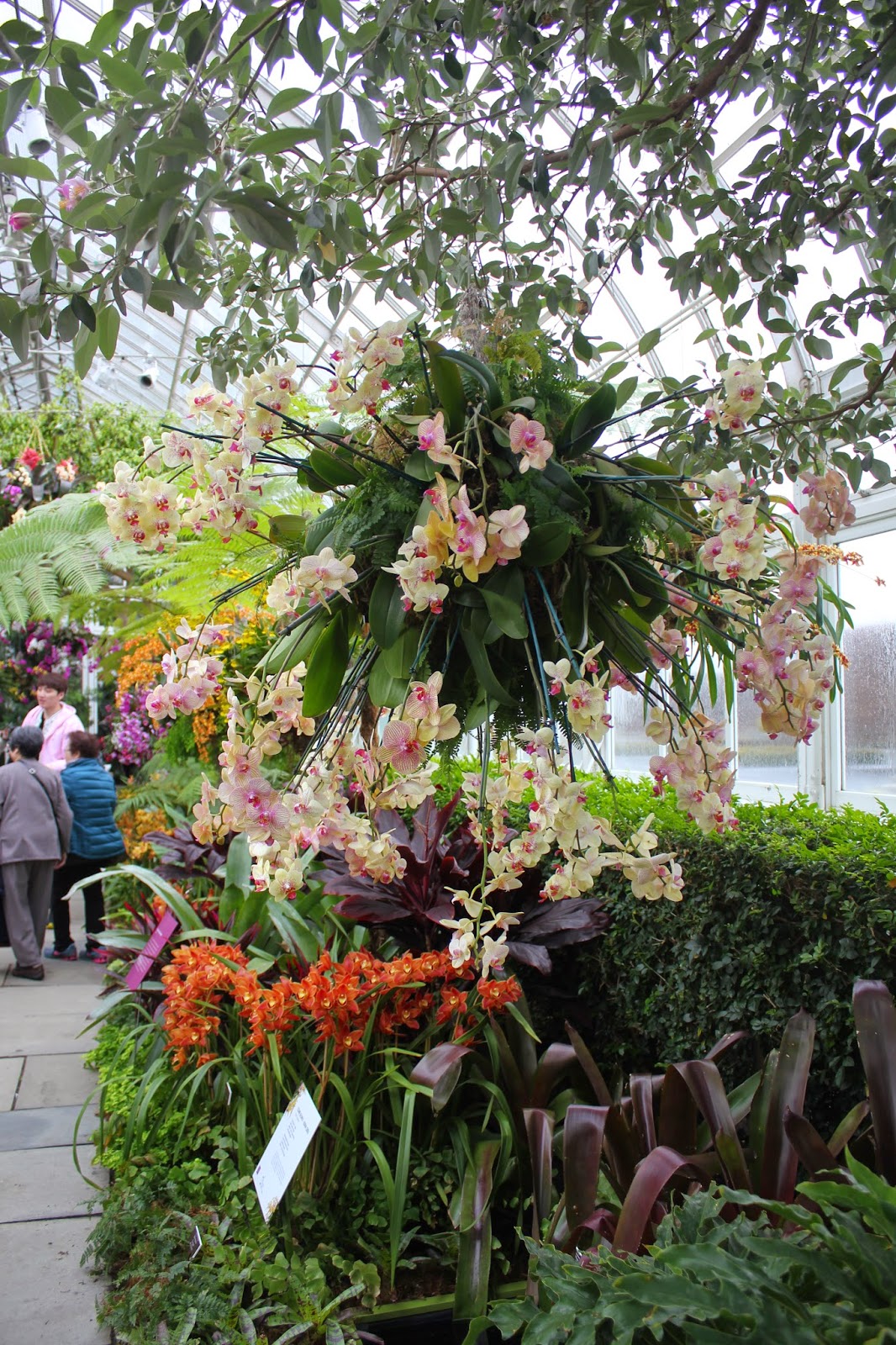Spring seems to be taking it's timing coming to New York this year. But inside the conservatory at the New York Botanical Garden, one quickly forgets the weather outside and its transfixed on the beauty and majesty inside. This year, the annual Orchid Show has been expanded to include beautiful displays throughout all the Rain Forest Galleries as well as the main exhibit section. In addition, the orchids aren't simply on display here and there, they are suspended from the ceiling and from the tops of trees and arches, truly living up to this year's theme name: Orchid Chandeliers.
By suspending these "chandeliers" one can admire the aerial beauty of these gorgeous and fascinating flowers.
Most of the cultivated orchids are epiphytes, which literally means "air plant" or "to grow on a plant." The roots of these plants do not grow on the ground, but rather in trees or on rocks. They are not parasites though, and therefore do not take anything from the host plant. They simply cohabitate, getting their moisture and nutrients from the air.
Other orchids (like Cymbidiums) are terrestrial, which means "growing in the ground." These orchids prefer to have their roots firmly in the ground, rather than on trees or bushes. There are over 200 species of terrestrial orchids and most grow wild in subtropical and tropical areas of America.
There is an estimated 30,000 naturally occurring orchid species and tens of thousands artificially created hybrids, yet each orchid flower shares similar characteristics, setting them apart from other flowers. Each orchid has the same "parts" - three sepals, three petals, a column and a lip. The lip (or labellum) is actually the third petal, but since it looks so different from the other two, it gets a different name. All orchids have a lip and it's function is to aid in the pollination process. Think of it as a fancy landing pad for an insect to land and do it's pollination business. The second characteristic is the column, which contains the reproductive organs ("male" anther with pollen and "female" stigma).
Some orchids mimic bees, wasps, butterflies and wasps. These adaptations help ensure that insect pollinators visit the flowers. I loved this one that looked like a spider.
Walking into the Enid A. Haupt Conservatory, these enormous clusters of orchids sit on top of the reflecting pool creating a mystical effect.
The true masterpiece of this show is the huge three-tiered, star-shaped chandelier that overflows with orchids. If you go, be sure to stand beneath it and look up. It's magical.
The 13th annual The Orchid Show at NYBG showcases so many different varieties of orchids and is a must-see this spring. The show continues through April 19 at New York Botanical Garden, 2900 Southern Blvd, Bronx, NY; nybg.com











Oh these are so gorgeous Kate! Thank you so much for sharing. It looks like you had a wonderful visit!
ReplyDeleteThanks Lee. It really was stunning.
Delete